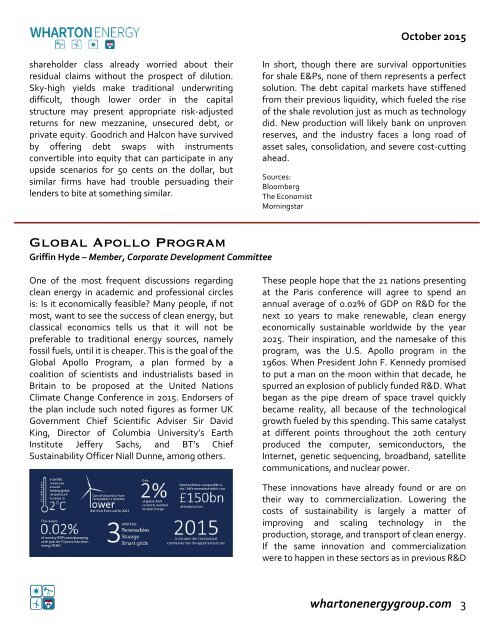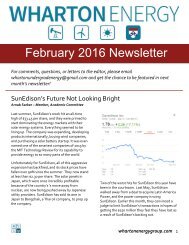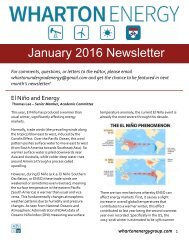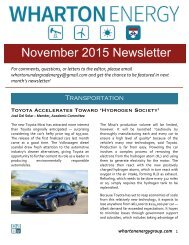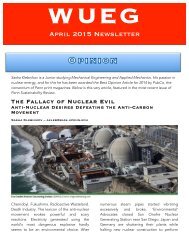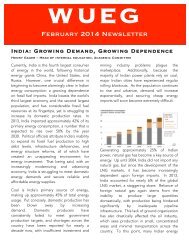Create successful ePaper yourself
Turn your PDF publications into a flip-book with our unique Google optimized e-Paper software.
<strong>October</strong> <strong>2015</strong><br />
shareholder class already worried about their<br />
residual claims without the prospect of dilution.<br />
Sky-high yields make traditional underwriting<br />
difficult, though lower order in the capital<br />
structure may present appropriate risk-adjusted<br />
returns for new mezzanine, unsecured debt, or<br />
private equity. Goodrich and Halcon have survived<br />
by offering debt swaps with instruments<br />
convertible into equity that can participate in any<br />
upside scenarios for 50 cents on the dollar, but<br />
similar firms have had trouble persuading their<br />
lenders to bite at something similar.<br />
In short, though there are survival opportunities<br />
for shale E&Ps, none of them represents a perfect<br />
solution. The debt capital markets have stiffened<br />
from their previous liquidity, which fueled the rise<br />
of the shale revolution just as much as technology<br />
did. New production will likely bank on unproven<br />
reserves, and the industry faces a long road of<br />
asset sales, consolidation, and severe cost-cutting<br />
ahead.<br />
Sources:<br />
Bloomberg<br />
The Economist<br />
Morningstar<br />
Global Apollo Program<br />
Griffin Hyde – Member, Corporate Development Committee<br />
One of the most frequent discussions regarding<br />
clean energy in academic and professional circles<br />
is: Is it economically feasible? Many people, if not<br />
most, want to see the success of clean energy, but<br />
classical economics tells us that it will not be<br />
preferable to traditional energy sources, namely<br />
fossil fuels, until it is cheaper. This is the goal of the<br />
Global Apollo Program, a plan formed by a<br />
coalition of scientists and industrialists based in<br />
Britain to be proposed at the United Nations<br />
Climate Change Conference in <strong>2015</strong>. Endorsers of<br />
the plan include such noted figures as former UK<br />
Government Chief Scientific Adviser Sir David<br />
King, Director of Columbia University’s Earth<br />
Institute Jeffery Sachs, and BT’s Chief<br />
Sustainability Officer Niall Dunne, among others.<br />
These people hope that the 21 nations presenting<br />
at the Paris conference will agree to spend an<br />
annual average of 0.02% of GDP on R&D for the<br />
next 10 years to make renewable, clean energy<br />
economically sustainable worldwide by the year<br />
2025. Their inspiration, and the namesake of this<br />
program, was the U.S. Apollo program in the<br />
1960s. When President John F. Kennedy promised<br />
to put a man on the moon within that decade, he<br />
spurred an explosion of publicly funded R&D. What<br />
began as the pipe dream of space travel quickly<br />
became reality, all because of the technological<br />
growth fueled by this spending. This same catalyst<br />
at different points throughout the 20th century<br />
produced the computer, semiconductors, the<br />
Internet, genetic sequencing, broadband, satellite<br />
communications, and nuclear power.<br />
These innovations have already found or are on<br />
their way to commercialization. Lowering the<br />
costs of sustainability is largely a matter of<br />
improving and scaling technology in the<br />
production, storage, and transport of clean energy.<br />
If the same innovation and commercialization<br />
were to happen in these sectors as in previous R&D<br />
whartonenergygroup.com 3


